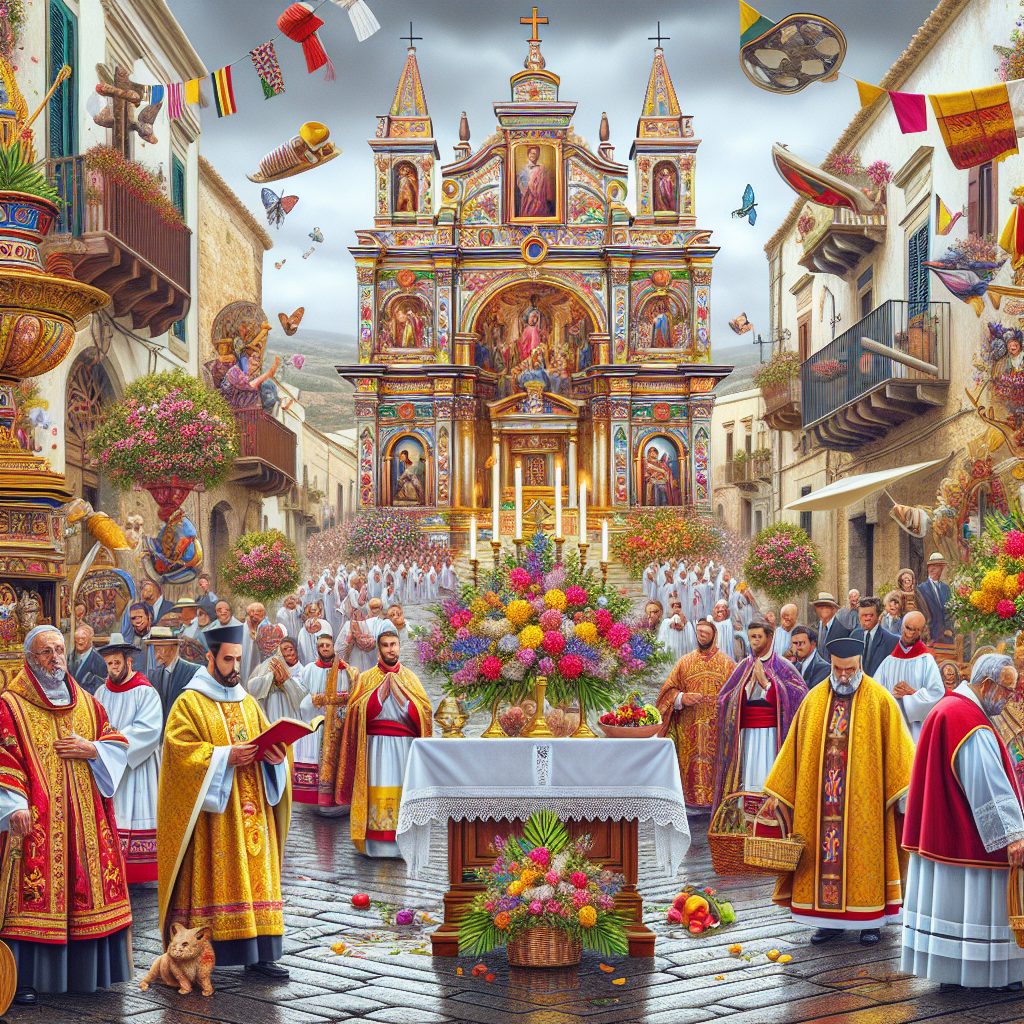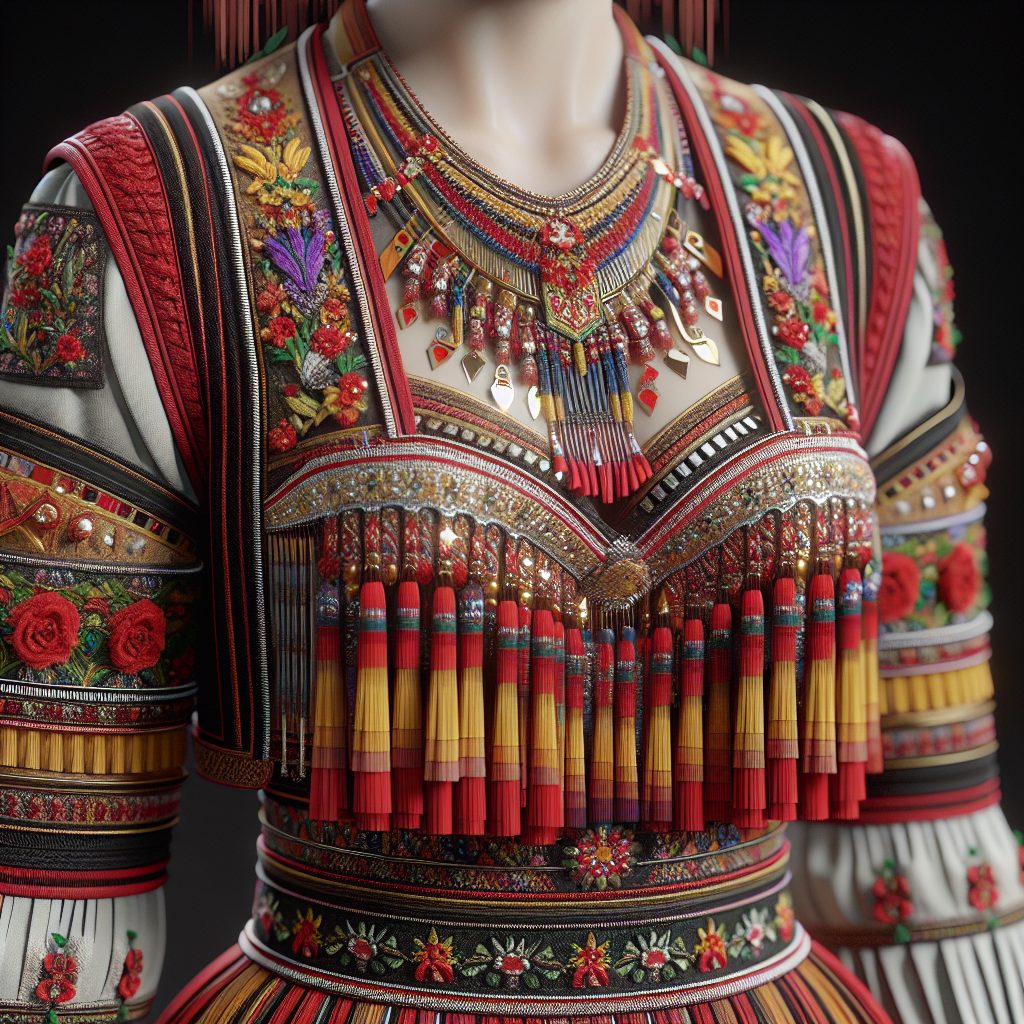Sardinian religious festivals are vibrant and lively events that hold significant cultural and spiritual importance in the region. Known for their strong historic roots, these festivals provide a unique insight into the rich traditions and customs of the Sardinian people. One fascinating aspect of these celebrations is the fusion of Catholic and pagan rituals, showcasing the island’s diverse religious heritage.
The impact of Sardinian religious festivals extends beyond the religious realm, as they play a crucial role in promoting social cohesion and community spirit. Through colorful processions, traditional music, and dance performances, these festivals bring people together from all walks of life, fostering a sense of unity and pride in their shared cultural heritage. Additionally, these events attract a considerable number of tourists, boosting the local economy and promoting Sardinia as a cultural destination.
In the upcoming sections, we will delve deeper into the key takeaways from Sardinian religious festivals. We will explore the significant rituals and traditions that make these celebrations unique, shedding light on the role they play in preserving Sardinian identity. Furthermore, we will uncover some lesser-known festivals that showcase the island’s religious fervor in mesmerizing ways. So, let us embark on a fascinating journey through Sardinian religious festivals and discover the vibrant tapestry of history, spirituality, and community.
Key Takeaways
1. Sardinian religious festivals are deeply rooted in the island’s ancient traditions and cultural heritage, illuminating unique practices and beliefs. These festivals form an essential part of Sardinian identity and reflect the islanders’ strong connection to their religious and cultural roots.
2. The most renowned religious festivals in Sardinia include the Holy Week celebrations in Cagliari and Alghero, during which intricate processions, symbolic rituals, and reenactments of biblical scenes are performed. These events attract numerous locals and tourists alike, showcasing the islanders’ devotion and commitment to their religious traditions.
3. One of the distinctive aspects of Sardinian religious festivals is the use of traditional costumes, masks, and historical garments. These outfits have significant cultural and historical importance, reflecting the island’s diverse traditions and folklore. Participants meticulously craft and wear these costumes, adding a sense of authenticity and vibrancy to the festivals.
4. Sardinian religious festivals, such as Sant’Efisio in Cagliari and Sant’Antonio Abate in Mamoiada, bear witness to the island’s animistic and pagan past. These rituals involve symbolic actions like fire and animal blessings, emphasizing the merging of ancient beliefs with Christian practices. This fusion of traditions creates a unique cultural tapestry, highlighting the island’s rich history.
5. Sardinian religious festivals are not just religious celebrations but also sociocultural events that foster a sense of community and solidarity among the islanders. These festivals bring people together, reinforcing social bonds and strengthening the island’s collective identity. Moreover, they contribute to the preservation of traditions and customs, ensuring that Sardinia’s cultural heritage continues to thrive for future generations.
What are the key highlights of Sardinian religious festivals?
1. Historical Significance
Sardinian religious festivals have a rich historical background, dating back centuries. These festivals have deep roots in the island’s traditional culture and are a significant part of its unique heritage.
2. Mythology and Folklore
Many Sardinian religious festivals are connected to ancient mythology and folklore. These traditions often reenact mythical events or depict legendary figures, providing an intriguing blend of religious and cultural elements.
3. Processions and Ceremonies
One of the main aspects of Sardinian religious festivals is the elaborate processions and ceremonies that take place. These processions involve participants dressed in traditional attire, carrying statues of saints or religious artifacts, and walking through the streets accompanied by music and hymns.
4. Traditional Practices and Rituals
Sardinian religious festivals incorporate various traditional practices and rituals. These may include lighting candles, offering prayers, performing sacred dances, or engaging in symbolic acts believed to bring blessings and protection.
5. Feast and Merriment
Food plays a significant role in Sardinian religious festivals, with feasting and merriment being important components. Traditional dishes and delicacies are prepared and shared among participants, creating a sense of unity and celebration.
6. Local Customs and Celebrations
Each town and village in Sardinia has its own unique customs and celebrations associated with religious festivals. These local variations add a distinct flavor to the overall experience, allowing visitors to explore different traditions and immerse themselves in the local culture.
7. Cultural Preservation
Sardinian religious festivals play a crucial role in preserving the island’s cultural heritage. These events provide a platform for passing down traditions, customs, and ancestral knowledge to future generations, ensuring the continuity of Sardinian culture.
8. Touristic Attractions
Many tourists are drawn to Sardinia specifically to experience its religious festivals. The vibrant atmosphere, colorful displays, and cultural authenticity make these festivals an enticing attraction for visitors seeking an immersive cultural experience.
9. Community Involvement
Sardinian religious festivals bring communities together, fostering a sense of unity and shared identity. These events rely heavily on the participation and active involvement of locals, reinforcing community bonds and a collective sense of belonging.
10. Spiritual Reflection and Devotion
For many Sardinians, religious festivals provide an opportunity for spiritual reflection and devotion. These events allow individuals to connect with their faith, express gratitude, and seek spiritual guidance, instilling a sense of inner peace and tranquility.
Guides and Tips:
- Plan your visit to coincide with specific festivals to fully experience the vibrant atmosphere and cultural significance.
- Research and familiarize yourself with the local customs and rituals associated with each festival to gain a deeper understanding and appreciation.
- Respect the religious and cultural traditions by following any dress code or behavioral guidelines provided.
- Try traditional Sardinian dishes during the festival feasts to indulge in authentic culinary delights.
- Participate in the processions and ceremonies as an observer, respecting the sacredness of the rituals.
- Engage with locals and immerse yourself in the community spirit to gain a more enriching festival experience.
- Capture the vibrant moments through photography or videography, but be mindful of any restrictions and respect people’s privacy.
- Support local artisans and craftsmen by purchasing handmade souvenirs or traditional crafts available during the festivals.
- Leave no trace and practice responsible tourism by cleaning up after yourself and respecting the festival grounds.
- Reflect on your own spirituality and embrace the opportunity for personal growth and introspection during the festival.
Frequently Asked Questions
1. What are the popular religious festivals celebrated in Sardinia?
Sardinia boasts a rich cultural heritage and is known for its vibrant religious festivals. Some popular festivals include the Sant’Efisio procession, the Feast of Saint Francis in Nuoro, and the Holy Week celebrations in Cagliari.
2. When do these religious festivals take place?
The dates of Sardinian religious festivals vary each year but generally follow the Catholic liturgical calendar. Festivals such as Sant’Efisio procession and Holy Week celebrations occur in spring, while the Feast of Saint Francis is celebrated in October.
3. How long do these festivals last?
Sardinian religious festivals can span from a single day to several days, depending on the event and its significance. The Holy Week celebrations, for instance, typically unfold over the course of a week, while other festivals may only last a day or two.
4. What can I expect to see at these festivals?
At Sardinian religious festivals, you can witness a plethora of traditional rituals, processions, and performances. From beautifully embellished statues carried through the streets to ancient hymns being sung, these festivals offer a unique insight into the island’s religious and cultural traditions.
5. Are these festivals open to everyone?
Absolutely! Sardinian religious festivals warmly welcome both locals and visitors. These events are an opportunity for everyone to experience the island’s rich history, devout beliefs, and artistic expressions. Just remember to be respectful and observe any specific customs or traditions.
6. Do I need to dress a certain way to attend these festivals?
While there is no strict dress code, it is advisable to dress modestly and respectfully when attending Sardinian religious festivals. Opt for comfortable attire and avoid wearing anything too revealing or inappropriate to maintain the cultural sanctity of the event.
7. Can I participate in the festivals as a visitor?
Yes. Many Sardinian religious festivals encourage active participation from visitors. However, it is recommended to familiarize yourself with the customs and traditions associated with each festival to fully engage in its activities and respect the religious significance.
8. Are there any traditional foods associated with these festivals?
Yes, there are various traditional foods associated with Sardinian religious festivals. For example, during the Feast of Saint Francis, you can indulge in typical Sardinian delicacies like seadas, a sweet pastry filled with cheese and drizzled with honey.
9. How can I find out about upcoming festivals in Sardinia?
To stay informed about upcoming Sardinian religious festivals, it is recommended to check local event listings, contact the tourism office, or search online for reliable sources that provide updated information on dates, locations, and specific details of each festival.
10. What other cultural attractions can I explore while attending these festivals?
While attending Sardinian religious festivals, you can also take the opportunity to explore other cultural attractions. From ancient archaeological sites and breathtaking coastal landscapes to charming villages and traditional craft workshops, the island offers a multitude of enriching experiences alongside its festivals.
Final Thoughts
Participating in Sardinian religious festivals is an extraordinary way to immerse oneself in the island’s vibrant culture and deep-rooted traditions. These festivals not only showcase the devout faith of the locals but also provide a glimpse into the island’s historical and artistic heritage. The lively processions, ancient rituals, and passionate performances create an ambiance of unity, celebration, and spiritual renewal. Attending Sardinian religious festivals is a captivating experience that leaves a lasting impression and fosters a deeper understanding and appreciation for the rich cultural tapestry of this enchanting Mediterranean island.
By embracing the diversity and significance of these festivals, visitors can forge a deeper connection with the people, traditions, and spiritual essence that have shaped Sardinia’s identity for centuries. Whether you witness the Sant’Efisio procession, join the Holy Week celebrations, or partake in other religious festivities, each event serves as a testament to the islanders’ unwavering devotion. Sardinian religious festivals are captivating occasions that honor age-old customs while inviting outsiders to share in the warmth, spirituality, and cultural pride of the island’s vibrant communities.






